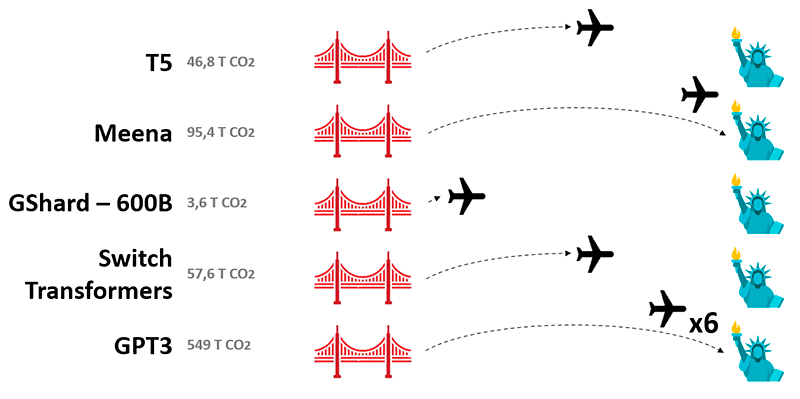Green algorithms for AI sustainability
When we talk about Artificial Intelligence (AI), we often associate it with sophisticated algorithms that help us solve many of the problems we encounter in our daily lives. We also consider it one of the fundamental pillars of digital transformation. However, it is rarely linked to ethics or sustainability.
That’s why today we’re discussing green algorithms and how they help us work more sustainably by improving energy consumption and reducing carbon emissions.
What are green algorithms?
To begin with, we must understand what green algorithms are. These are algorithms designed in a way that achieves the same results as a more complex algorithm while consuming fewer resources. In short, they are more energy-efficient algorithms with a lower carbon footprint. But how did we reach the point where these green algorithms became necessary?
Today, more than 50% of the world’s population has internet access. Billions of people access online content and services daily, demanding a telecommunications infrastructure capable of supporting that load. This demand for services is growing exponentially, and data centers must be prepared to handle it.
⚠️ While this evolution in connectivity and computing power has brought about numerous improvements and significant advances, it has also led to an increase in energy consumption.
Energy consumption impact
As of March 2024, there were 10,593 data centers worldwide. According to estimates from the International Energy Agency, their global energy consumption is around 460 TWh, accounting for nearly 2% of global electricity demand.
It is predicted that these figures will continue to rise, and in a worst-case scenario, they could double by 2026 due to the advancement and development of trends like AI or cryptocurrencies. This projected energy consumption is equivalent to Germany's electricity use.
✅ Each data center consumes about 68,000 liters of water daily to cool its servers, which is equivalent to a person’s annual water consumption. In recent years, alternative data center designs have been tested to reduce cooling costs.
CO2 emissions impact
In addition to energy consumption, data centers generate significant carbon dioxide emissions. For example:
- Streaming 30 minutes of video on a platform emits 1.6 kg of CO2, equivalent to driving approximately 10 kilometers.
- In the cryptocurrency sector, Bitcoin's carbon footprint is comparable to that of New Zealand (36.95 tons of CO2).
✅ Each Bitcoin transaction is equivalent to the CO2 emissions of 750,000 credit card payments. Not only do cryptocurrencies generate emissions, but the electricity consumed globally by cryptocurrencies is equivalent to the Netherlands' electricity consumption.
AI's energy impact
In this context of increasing energy consumption, advances in computing power also come into play. The surge in machine learning, particularly deep learning models, is increasing the energy consumption and carbon footprint of the cloud industry.
 Image by the author.
Image by the author.
Google Flights estimates emissions from a round trip flight between San Francisco and New York are 180 tons of CO2. When compared to the emissions from training certain LLMs systems (Large Language Models), the results are as follows:
- T5 LLM natural language model accounts for 26% of flight emissions.
- Meena accounts for 53%.
- GShard-600B represents 2%
- Switch Transformers account for 32%
- GPT-3 from OpenAI, the company behind ChatGPT, exceeds flight emissions by 305%.
✅ According to a study by the University of California, Berkeley, emissions from training GPT-3 reached 552 tons of CO2, with an energy consumption of 1,287 MWh. These figures are comparable to the average energy consumption of an American household over 120 years.
In short, it is becoming increasingly evident, both at a personal and business level, that carbon footprint is a global challenge. As a result, many companies are taking steps to become carbon-neutral, making changes to their activities to reduce pollution. This is where green algorithms come into play.
Green algorithms: a firm step toward sustainability
To track energy consumption during code execution, Python libraries such as CodeCarbon, Eco2AI, and Kiri can be embedded within the code. These libraries calculate the electricity consumed and the CO2 emitted during each execution, providing developers with greater visibility into emissions generated by their code.
Green algorithms are those built more efficiently, saving energy and reducing carbon dioxide emissions.
Some of these libraries even compare emissions with their equivalents, such as mileage driven in cars, TV hours watched, or average household consumption. In some cases, they even suggest more efficient solutions, like changing the data center location.
Conclusion
Green algorithms offer a solution to society's sustainability challenge without sacrificing technological progress enabled by AI. Implementing these tools not only reduces environmental impact but also fosters greater awareness of energy consumption and CO2 emissions in the tech sector.
Developers and tech companies must adopt these sustainable practices. In addition to reducing emissions and energy consumption, they optimize resources and generate significant cost savings.
Thus, the transition toward greener, more sustainable technology is a collective effort requiring all stakeholders' collaboration. By doing so, we not only contribute to the planet's well-being but also unlock new opportunities for environmentally friendly innovations.
 Hybrid Cloud
Hybrid Cloud Cyber Security & NaaS
Cyber Security & NaaS AI & Data
AI & Data IoT & Connectivity
IoT & Connectivity Business Applications
Business Applications Intelligent Workplace
Intelligent Workplace Consulting & Professional Services
Consulting & Professional Services Small Medium Enterprise
Small Medium Enterprise Health and Social Care
Health and Social Care Industry
Industry Retail
Retail Tourism and Leisure
Tourism and Leisure Transport & Logistics
Transport & Logistics Energy & Utilities
Energy & Utilities Banking and Finance
Banking and Finance Sports
Sports Smart Cities
Smart Cities

.jpg)



